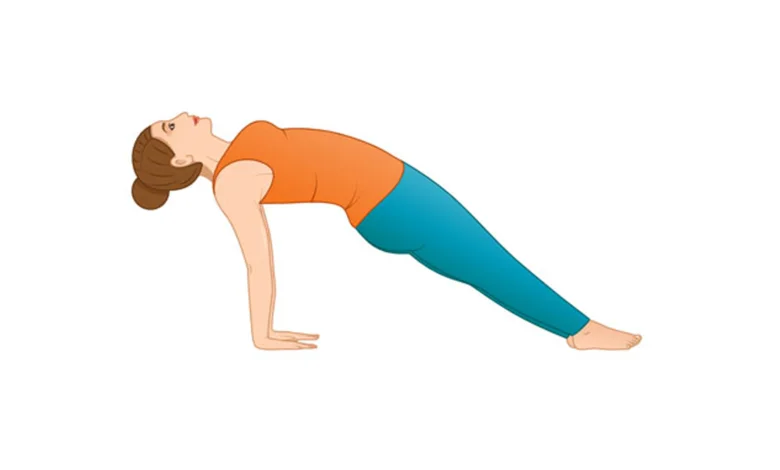
How to Lose Weight Fast: Science-Backed Tips for Sustainable Success
Reducing carbohydrates, increasing protein intake, incorporating weightlifting, and ensuring adequate sleep are all effective strategies for sustainable weight loss.
How to Lose Weight Fast: Science-Backed Tips for Sustainable Success Prioritizing long-term health and adopting habits that you can maintain consistently will not only enhance your overall well-being but also increase the likelihood of achieving lasting weight loss.
Here are some science-supported tips to help you lose weight:
How to lose weight in 6 simple steps
1. Eat protein, fat, and vegetables
Strive to include a diverse range of foods in each meal. For a well-balanced plate, ensure that your meals consist of protein, healthy fats, vegetables, and complex carbohydrates.
According to the Dietary Guidelines for Americans 2020–2025, here are the recommended amounts of each food group based on age:
| Food Type | Adults | Children 2–8 | Children 9–13 | Adolescents 14–18 |
|---|---|---|---|---|
| Protein | 5–7 ounces (oz) | 2–5.5 oz | 4–6.5 oz | 5–7 oz |
| Vegetables | 2–5 cups | 1–2.5 cups | 1.5–3.5 cups | 2.5–4 cups |
| Healthy Oils | 22–44 grams (g) | 15–24 g | 17–34 g | 24–51 g |
| Grains | 5–10 oz | 3–6 oz | 5–9 oz | 6–10 oz |
Protein

Consuming the recommended amount of protein is crucial for maintaining muscle mass during weight loss. Adequate protein intake can also help curb cravings and reduce snacking by keeping you feeling full and satisfied.
Here are examples of protein-rich foods, including their amounts and serving sizes, according to the U.S. Department of Agriculture’s Food Data Central database.
| Food | Protein per 100 grams | Daily Serving |
|---|---|---|
| Lean Ground Beef | 20.8 g | 3.7 oz |
| Skinless Chicken Breast | 23.2 g | 3.7 oz |
| Black Beans | 21.6 g | 0.7 oz |
| Lentils | 9.02 g | 0.7 oz |
Vegetables
Vegetables are a valuable addition to your diet, providing essential nutrients. Aim to consume about 2.5 cups of vegetables daily.
Examples of nutrient-rich vegetables include:
- Leafy greens
- Tomatoes
- Bell peppers
- Green beans
- Squash
Keep in mind that some vegetables, such as potatoes, sweet potatoes, and corn, are higher in carbohydrates and calories and may be categorized as carbs or grains. Be mindful of portion sizes when including these vegetables in your meals.
Healthy Fats
Incorporating healthy fats into your diet—such as those from olive oil, avocados, nuts, and seeds—can be beneficial for your eating plan.
While oils like olive oil are considered healthy, they provide 9 calories per gram, compared to protein and carbohydrates, which each provide 4 calories per gram. Therefore, it’s important to consume healthy fats in moderation and to limit your intake of saturated and trans fats.
Here are some examples of foods rich in healthy fats:
| Food | Healthy Fat Content | Saturated Fat Content |
|---|---|---|
| Almonds (100 g) | 49.9 g | 3.8 g |
| Sunflower Seeds (100 g) | 56.1 g | 5.4 g |
| Green Olives (100 g) | 15.3 g | 2 g |
| Avocados (100 g) | 14.7 g | 2.1 g |
| Butter (100 g) | 81.1 g | 51.4 g |
| Coconut Oil (100 g) | 99.1 g | 82.5 g |
Moderation with Saturated Fats
Butter and coconut oil should be consumed in moderation due to their high saturated fat content.
2. Get Moving
The Physical Activity Guidelines for Americans suggest combining cardio exercises with weight training for optimal health benefits. Cardio activities include walking, jogging, running, cycling, and swimming. Explore various weight training exercises to complement your routine.
Consult with your doctor before starting any new exercise regimen.
3. Increase Fiber Intake
Fiber travels slowly through the digestive system and can help you feel full longer, aiding in weight loss. It may also stabilize blood sugar levels, promote digestive regularity, and provide protection against certain chronic conditions.
Foods rich in fiber include fruits, vegetables, whole grains, breads, and legumes. Aim to consume 2 cups of fruit and 6 ounces of grains daily. Many vegetables and legumes also offer a good amount of fiber.
Here are examples of high-fiber foods along with their recommended daily servings:
| Food | Fiber Content (per 100 g) |
|---|---|
| Oats (100 g) | 10.4 g |
| Chickpeas (100 g) | 5.9 g |
| Bananas (1 banana) | 2.2 g |
| Brussels Sprouts (100 g) | 2.6 g |
| Beets (100 g) | 2 g |
| Apples (100 g) | 2 g |
| Quinoa, cooked (100 g) | 2.8 g |
4. Eat Mindfully
Understanding how your body responds to food can help prevent overeating through mindful eating. This approach involves:
- Eating Slowly: Taking your time to eat allows your brain to register fullness, helping you distinguish between genuine hunger and emotional cravings.
- Recognizing True Hunger: Learning to differentiate between physical hunger and emotional cravings can prevent unnecessary snacking.
- Cooking Colorful Foods: Preparing meals with a variety of textures and colors can make your eating experience more enjoyable and satisfying.
Eating too quickly can prevent your brain from signaling that you’re full, which may lead to overeating. By minimizing distractions and focusing on your meal, you can learn to listen to your body’s hunger cues more effectively.
5. Stay Hydrated
Drinking plenty of water is crucial for weight loss and overall health. Benefits include:
- Reducing Food Intake: Drinking water before meals can help you eat less by making you feel fuller.
- Increasing Fat Burning: Adequate hydration may enhance fat burning, supporting long-term weight loss.
- Avoiding Sugary Drinks: Choose water or low-calorie beverages over sugar-sweetened drinks like soda, which contribute to weight gain.
Water helps maintain hydration during exercise and aids in waste removal from the body, promoting efficient bodily functions.
6. Get Plenty of Sleep
Adequate sleep is an essential component of a successful weight loss strategy. Key points include:
- Weight Management: People who sleep less than 7 hours per night are more likely to have a higher BMI and develop obesity.
- Hormonal Balance: Sleep deprivation can disrupt hormones that regulate hunger and appetite.
Aim for at least 7 hours of quality sleep each night to support weight loss and overall health.
What about calories and portion control?
Balancing Your Diet Without Counting Calories
It’s not always essential to count calories if you maintain a balanced diet that includes adequate protein, healthy fats, and vegetables. Focusing on a well-rounded diet can often be sufficient for managing weight.
When to Track Calories
If you find that you’re not losing weight despite eating a balanced diet, tracking your calorie intake might help identify potential issues. Use a free online calculator to estimate your daily calorie needs and adjust your intake as necessary.
Avoid Extreme Calorie Reduction
Consuming too few calories can be harmful and may hinder effective weight loss. Aim to reduce your calorie intake in a sustainable and healthy way, and always consult with a doctor before making significant changes to your diet.
Avoiding Extreme Calorie Reduction
Consuming too few calories can be harmful and may not effectively support weight loss. Instead, aim to reduce your calorie intake by a sustainable and healthy amount, as advised by a healthcare professional.
Considerations for Calorie Counting
While calorie counting can be a useful tool for some, it may not be suitable for everyone. If you find yourself preoccupied with food, feeling guilty about your choices, or consistently engaging in restrictive diets, it may be beneficial to seek support. These behaviors could indicate a disordered relationship with food or an eating disorder.
Seeking Support
If you’re struggling with these issues, consult a qualified healthcare professional, such as a registered dietitian. For additional help, you can reach out to the National Eating Disorders Association (NEDA). They offer free and confidential support through chat, call, or text, and provide various resources to help you.
Sample Meal Ideas for Fast Weight Loss
Here are some nutritious meal ideas that can support weight loss by including a balanced mix of proteins, healthy fats, and complex carbs:
- Poached Egg with Sliced Avocado and a Side of Berries
- Salmon Baked with Ginger, Sesame Oil, and Roasted Zucchini
- Spinach, Mushroom, and Feta Crustless Quiche
For more nutritious snack ideas, refer to our snack guide.
How Fast Will You Lose Weight?
You might experience faster weight loss during the first week of a new diet plan due to a mix of body fat and water weight loss. For beginners, weight loss might be more rapid initially. A safe and sustainable goal is to aim for losing 0.5 to 2 pounds per week.
Frequently Asked Questions
What is the Fastest Way to Lose Weight?
Reducing your calorie intake and increasing physical activity are effective strategies for quick and sustainable weight loss. However, individual factors such as your diet, medications, hormones, mood, and genetics can influence your results.
How Can I Lose Weight in 7 Days?
To potentially see weight loss in 7 days, focus on reducing processed foods and added sugars. Drinking plenty of water and increasing dietary fiber can also help. Remember, aiming for a gradual weight loss of 0.5 to 2 pounds per week is generally more sustainable.
How Can I Drop 20 Pounds Fast?
To work towards losing 20 pounds, combine regular exercise, proper hydration, and a balanced diet rich in nutrient-dense foods. For safe weight loss, aim for 0.5 to 2 pounds per week, and consider other factors such as medications, health conditions, hormones, and genetics.
How Can I Lose 10 Pounds in a Week?
Losing 10 pounds in a week is unrealistic and unsustainable. For safe weight management, focus on losing 0.5 to 2 pounds per week through dietary and lifestyle changes.
How Can I Lose 15 Pounds in 2 Weeks?
Losing 15 pounds in 2 weeks is neither realistic nor safe. A healthy weight loss rate is 0.5 to 2 pounds per week, achievable through changes in diet and lifestyle.
Bottom Line
While quick weight loss may be appealing, it’s important to prioritize long-term health and sustainability. While initial water weight loss can be swift, fat loss is more gradual. Developing a sustainable weight loss strategy will benefit you in the long run.






